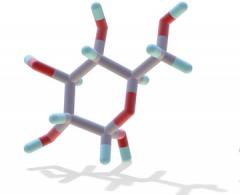
This Article From Issue
May-June 2025
Volume 113, Number 3
Page 130
During World War II, scientific research proved to be crucial. Even while the outcome of the war was uncertain, in 1944, U.S. President Franklin D. Roosevelt was certain of the essential contribution of science to the nation’s security. He commissioned a report, spearheaded by Vannevar Bush, then the head of the Office of Scientific Research and Development, titled Science—The Endless Frontier. This influential white paper laid out the rationale for government support of science and led to the establishment of the National Science Foundation (NSF). Some of its main tenets were an emphasis on the open flow of scientific knowledge across international borders, the need for basic research, the discouragement of political favoritism in scientific appointments, and a focus on just educational opportunities. Bush and his colleagues employed the idea of science as capital, which provides the necessary fund of knowledge that could be drawn from to serve national security, health, and public welfare. (For more, see “Frontier Values,” November–December 2024.)
Any number of accounting methods can show that the investment made in the NSF has paid off many times over. At a time when it appears that the proven reasons for institutions such as the NSF are being challenged by the current U.S. administration, it becomes imperative to emphasize the need for evidence-based research and decision-making at all levels of government and society. American Scientist and its publisher, Sigma Xi, The Scientific Research Honor Society, have always advocated for good science policy. Sigma Xi has submitted a request for clarification of the U.S. administration’s plan for the future of scientific research. Keep an eye out for other resources from Sigma Xi, including mental health support, career aids for displaced federal scientists, and a webinar series featuring policy experts to help the scientific community navigate changes affecting federal science policy. The recent Stand Up for Science rally, held on March 7 in Washington, D.C., and with satellite events across the country, showed widespread support for research and the need for public celebration of science.

Ellen Jewett
Art has always been another medium for both the celebration and critique of science, inviting a different viewpoint and a nuanced consideration of many angles on an issue or area of research. In this issue’s Arts Lab column, “Creatures Both Serene and Deeply Strange," we feature an interview with Ellen Jewett, a sculptor who combines representations of often opposing organisms to examine ways that the natural world can be familiar and also indifferent. Her work was not created in response to current events, but in many ways, I feel it applies. In her 2017 work titled The Burden of Motion and Ambition (right), the artist says that the black bear speaks to the psychological real estate accrued from a life lived with great momentum. I feel that many scientists will resonate with this work, seeing in it the ways that researchers strive for answers in their data while dealing with the heavy weights of policy and funding. I hope that science and research remain strong and resilient. As always, join us on social media to let us know what you think.

American Scientist Comments and Discussion
To discuss our articles or comment on them, please share them and tag American Scientist on social media platforms. Here are links to our profiles on Twitter, Facebook, and LinkedIn.
If we re-share your post, we will moderate comments/discussion following our comments policy.